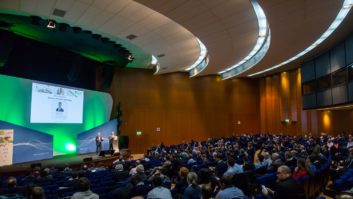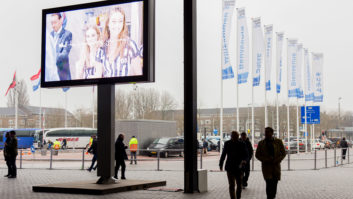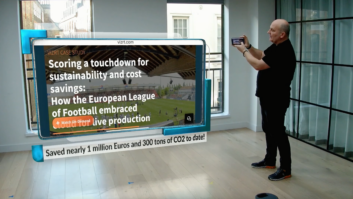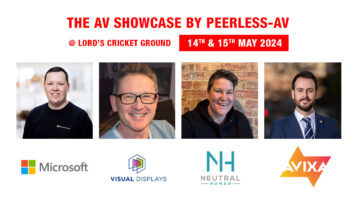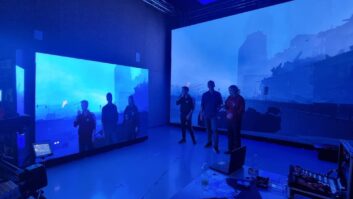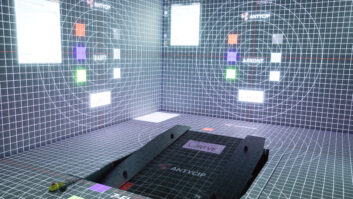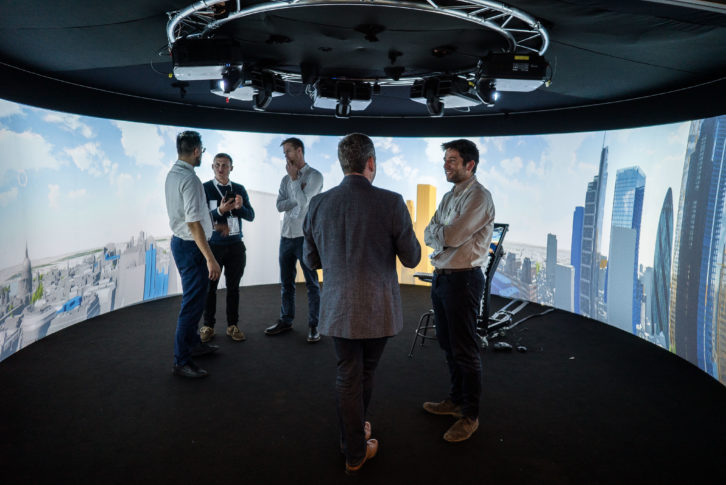
In the first part of this XR feature, we looked at where elements of XR can have an impact on corporate and education environments. Here Rob Lane finds that there is a very broad array of potential use cases in education and corporate environments, but process change can be slow.
“Both the appetite we are currently seeing for exploration with mixed reality technologies, and the potential this yields for transforming AV solutions are hugely exciting,” says Andy Hook, technical solutions director, White Light.
“As a company, we are currently investing significant R&D resources into experimentation with XR applications in projects for the education, corporate and broadcast sectors. XR technologies are equipping us with the tools to create larger, more immersive digital canvases, which span across multiple display media and devices. This enables the creation of more interactive, more usable and more immersive AV experiences.”
“XR technologies are equipping us with the tools to create larger, more immersive digital canvases, which span across multiple display media and devices”
Andy Hook, White Light
Although Dan Watson, senior consultant at PTS Consulting believes that the true benefits of XR within education and corporate sectors have “yet to be realised” and that the adoption of XR outside of the gaming world is “still in its infancy”, it’s clear that the potential is huge. “XR allows for the delivery of content in such a way that suits all of the Memletic learning styles,” says Watson. “If you look at XR in corporate currently, then it is mainly being used for training… mainly for support staff. But PTS is in the process of developing several XR support platforms for various clients, which comprises VR, AR and MR, allowing users – at high level – to walk around the environment, see operation stats of equipment, and pull up information and manuals instantly.”
Watson cautions that there is currently a lack of understanding of how XR could enhance and improve workflows, and that, indeed, the workflow majority across core sectors do not really have a use for XR as of yet – but that this is set to change with the influx of the next wave of a younger, XR-familiar, workforce, many drawn from higher education campuses that may have already deployed such technologies.
“The interesting thing about the education market is that there are so many XR use cases,” explains Jake Rowland, head of business development, Igloo Vision. “At the most basic level, immersive environments are being used to take students on virtual field trips. But they are also being used in the creation of XR content, like games, 360° films and other immersive experiences.
“Another thing to remember is that, with enterprise XR solutions taking root, and immersive workspaces taking off, employers are looking for job applicants with practical experience in immersive technology.”
Step change
XR is certainly beneficial to learning. According to Simon Benson, founder of Realised Realities, initial studies have shown that retention tends to be much higher when immersive experiences are accessed, compared to conventional education. “Some studies state 80% retention after one year, compared to only 20% with conventional learning. This indicates the opportunity of a huge step change in the potential of education across the board.”
As XR is based upon access to virtual content, there are really no limits to scope and location – it’s possible to deliver practically infinite space, tools and objects, from anywhere. Consequently, a lecture could be organised where all participants are sat at home at their desks but are simultaneously entering a virtual space of learning and collaboration.
“This snapshot of the potential of the technology can be applied to many different applications, from creative reviews to shared training where the best teacher in the world can reach thousands of students across the globe for a natural, interactive experience,” explains Benson.
Of course, there are costs and challenges, particularly within education, but Christian Bozeat, director, MACOM GMBH (UK), reasons that speed of change and implementation challenges could be more of an issue. “Defining how to utilise XR, changing teaching methods and then proving the benefit that is gained by utilising the new technology could be the biggest challenge to the speed of implementation in some departments,” he says. “Working process change is often the biggest challenge to adoption.”
Within corporations, training is often cited as the main beneficiary of XR, and certainly the engineering and manufacturing industries are embracing it. However, visualisation is also important, with architects and construction professionals using it to experience ‘virtual tours’ of build environments. And the expectation is that it will be more broadly adopted in marketing suites.
“We are seeing the growth of immersive workspaces, which are used for a whole range of applications – like virtual meeting and conferencing spaces, data visualisation suites, and ideation and brainstorming spaces,” says Rowland. “Igloo has installed such immersive workspaces for clients such as Accenture, Microsoft, BP and Dell.”
“I think there is a case for XR in corporate too,” adds Emma Bigg, director at consultants Octavius RE. “Not only for meetings, but for accessing and evaluating data. We see data walls and Twitter walls in installs all the time now, so there is a big argument for bringing the analysis and evaluation of data into the visual domain.
“Telepresence is a common word in the world of virtual meetings, and there is a trend to creating more immersive virtual meetings; there is good reason to think this will evolve further as XR does. I also think there could also be an interesting use for internal communications, especially in large, diverse organisations.”
Virtualising environments
XR is a valuable asset when it comes to sustainability, reducing the need for travel and improving remote working experiences. Mixed reality environments should also enable staff to have more effective, more collaborative and more engaging meetings and presentations.
“Reducing business travel by virtualising environments and allowing people to have more engaging remote meetings will become an ever-increasing priority within the corporate culture,” explains Hook. “Our Innovations team are currently working on further evolution of the SmartStage technology, for a range of applications for corporate presentations and video conference solutions over the coming year.”
Some companies are more predisposed to embrace technologies such as XR of course, with others perhaps seeing it as gimmicky or overcomplicated. It depends upon the corporate culture, and the speed of adoption will vary accordingly.
“A more traditional environment such as a banking institution would be very different to that of a global technology company,” says Bigg, “with the latter more likely to adopt XR as part of its business culture. And of course, companies with a more dispersed workforce may find XR more appealing and useful than companies that follow a more traditional model of workers travelling to a central hub each day.”
As adoption becomes more widespread and accepted, as costs fall and as businesses discover how the various technologies – perhaps AR in particular – can best benefit their own individual cultures and working environments, XR will inevitably embed into the broader adoption of AV tech, perhaps ultimately losing its categorised (and in any case not fully defined) moniker.
“VR is tough to execute in a traditional corporate environment, such as in a boardroom, because of the reluctance to wear headsets,” explains Linda Duggan, Portfolio Manager, Holovis. “People often feel self-conscious, they don’t want to put something on their head that is going to mess up their hair or make up and they worry about the hygiene implications.
“However, the advancement of AR applications now means that this market can still get a level of immersion without needing to wear full headsets. Data can be brought to life, overlaid and analysed on devices such as mobiles or tables.”
“We are starting to see a shift, as the corporate world is grasping the practical capabilities of the technology and becoming increasingly aware of the transformative potential this offers,” adds Hook.
“I strongly believe that one day most of the display devices we interact with will be augmented into our own digital worlds, facilitated by augmented reality devices. This means that we will no longer rely on televisions, laptops or desktop monitors, and instead create virtual screens whenever and wherever we need them and share those displays with others by invitation.
“With expected AR device releases, explosions in the world of ‘cloud AR’ and advances in graphics hardware and software technology, 2020 is likely to see significant advances in this area and take us a step closer to that vision.”
www.holovis.com
www.macom.de/en
www.octaviusre.com
www.ptsconsulting.com
www.realisedrealities.com
www.whitelight.ltd.uk
